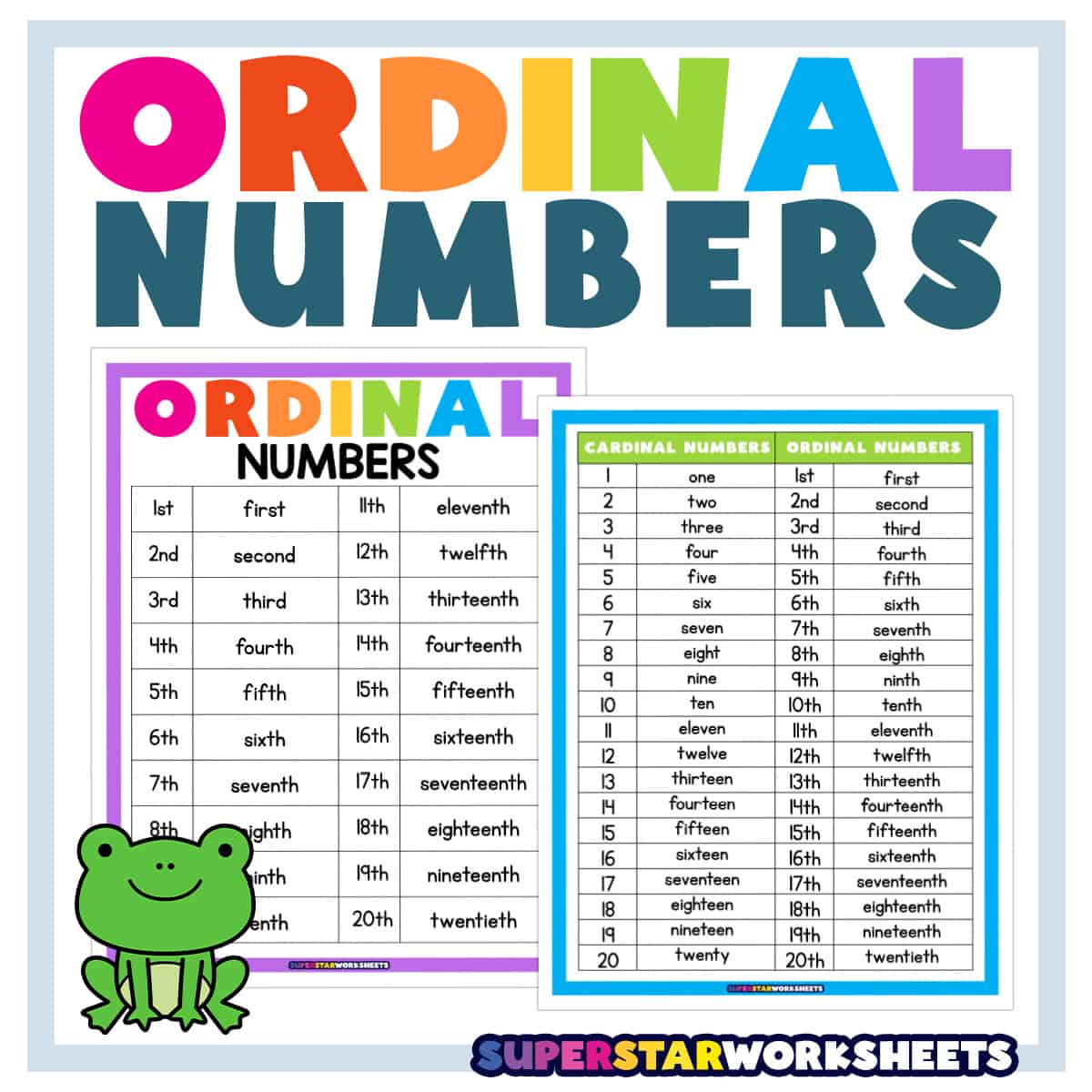
Ordinal numbers for elementary students! Ordinal numbers, such as first, second, and third, play a crucial role in English grammar and are used to indicate the position or order of things. We’ve got flashcards, worksheets, and games to keep kids learning and growing in math. Continue to build your students’ math skills with our Kindergarten Interactive Math Curriculum!
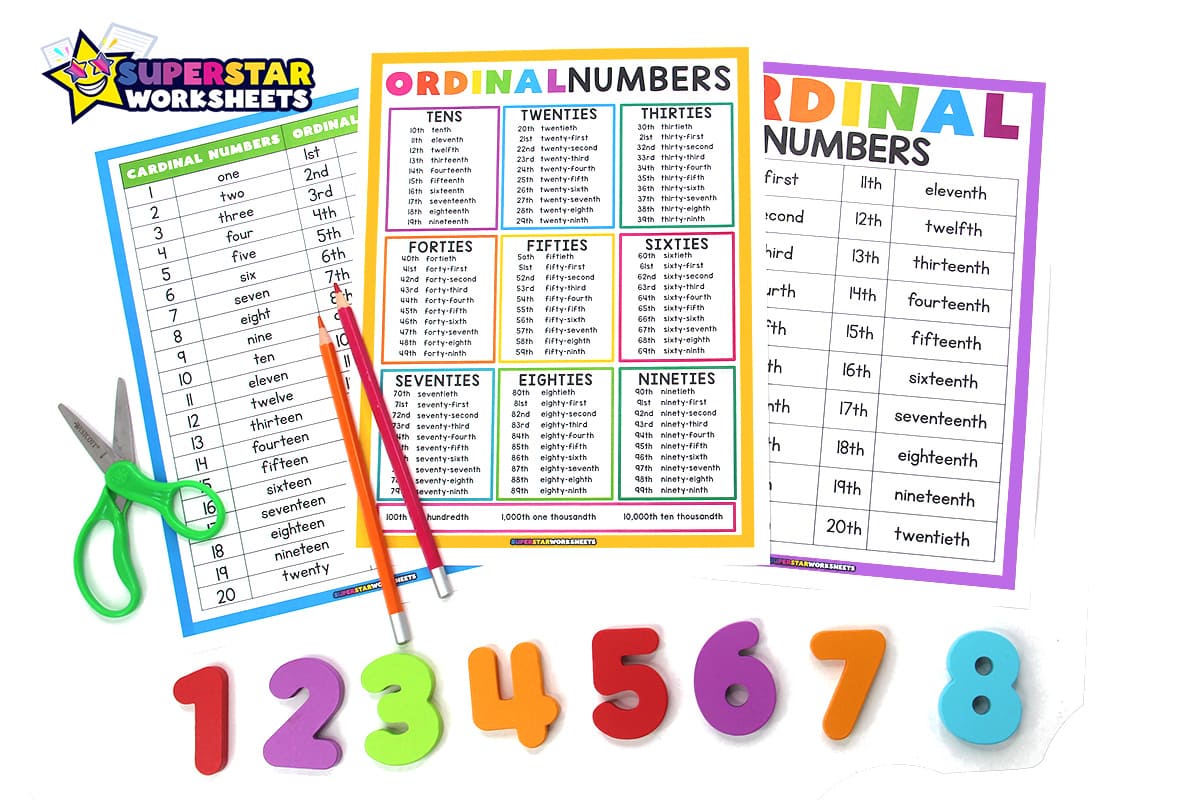
What are Ordinal Numbers?
Ordinal numbers are specific types of numbers that we use to describe the order or position of an object or element in a series. Unlike cardinal numbers, which represent quantity or count, ordinal numbers indicate rank or order. For example, while cardinal numbers tell us “there are five apples,” ordinal numbers tell us “the fifth apple in the basket.” Ordinal numbers are formed by adding a suffix (such as -st, -nd, -rd, or -th) to the cardinal numbers. They help us navigate and sequentially organize information, making them essential in various aspects of everyday life, from ranking sports teams to describing dates and addresses.
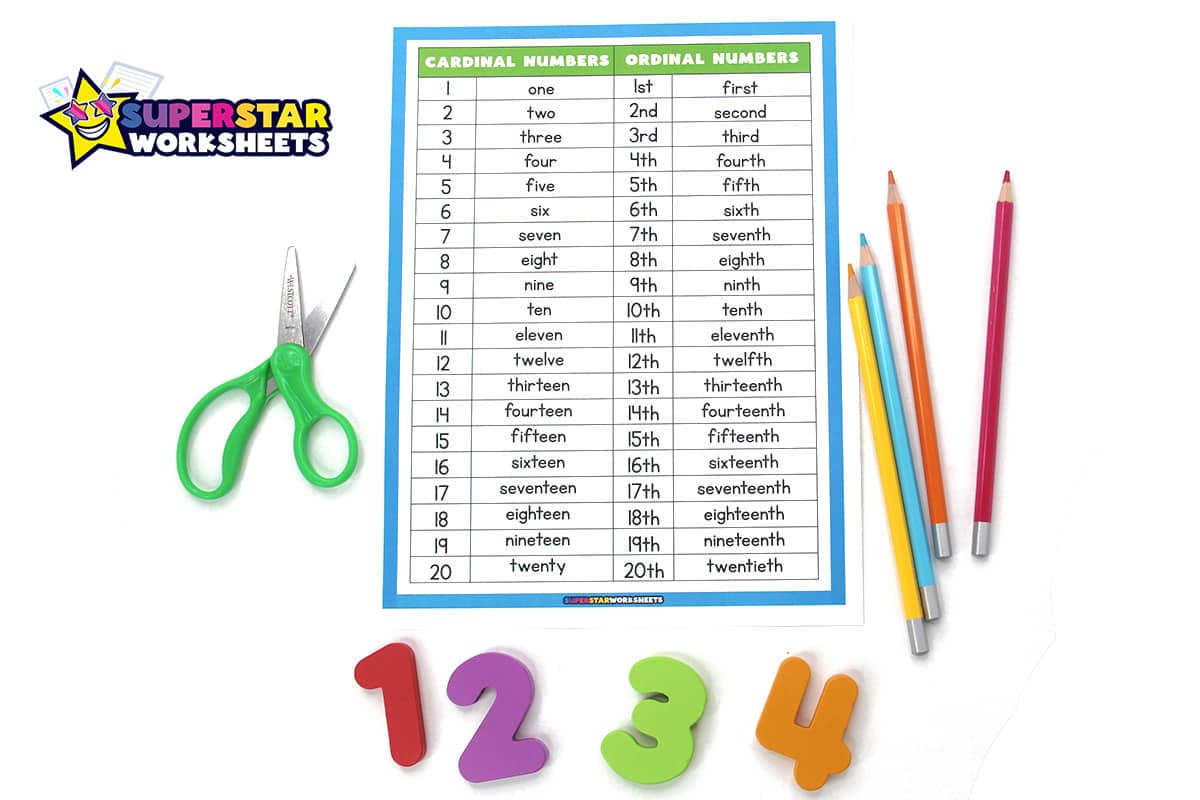
When to Use Ordinal Numbers?
In the classroom, teachers utilize ordinal numbers to help organize and guide their students through various activities and tasks. They may use them to describe the order in which students are to line up, to establish turn-taking during group discussions or presentations, and even when distributing materials or assigning seats.
We also use ordinal numbers in day-to-day life to describe rankings, placements, or sequences. Some common instances where we use ordinal numbers include describing birth order, giving directions, expressing dates, indicating ranks in competitions or races, and discussing milestones or anniversaries. By using ordinal numbers, we provide a clear and concise way to convey the specific position or order of something in a given context.
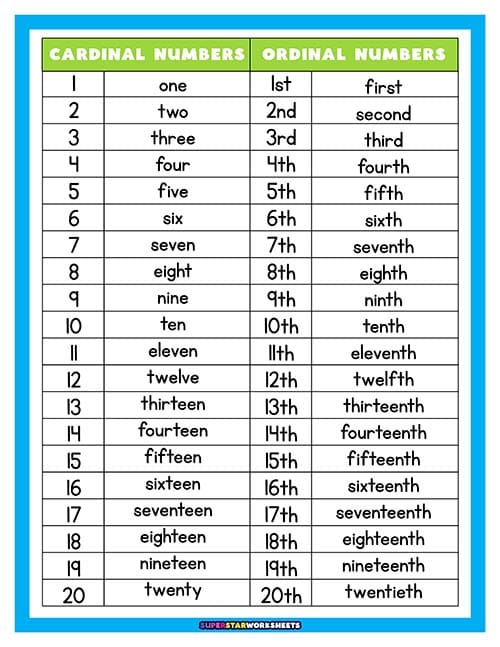
Ordinal Numbers vs. Cardinal Numbers
This ordinal number vs. cardinal number chart provides a visual representation to students. Cardinal numbers give an amount to number, whereas ordinal numbers describe where the number is located in a list.
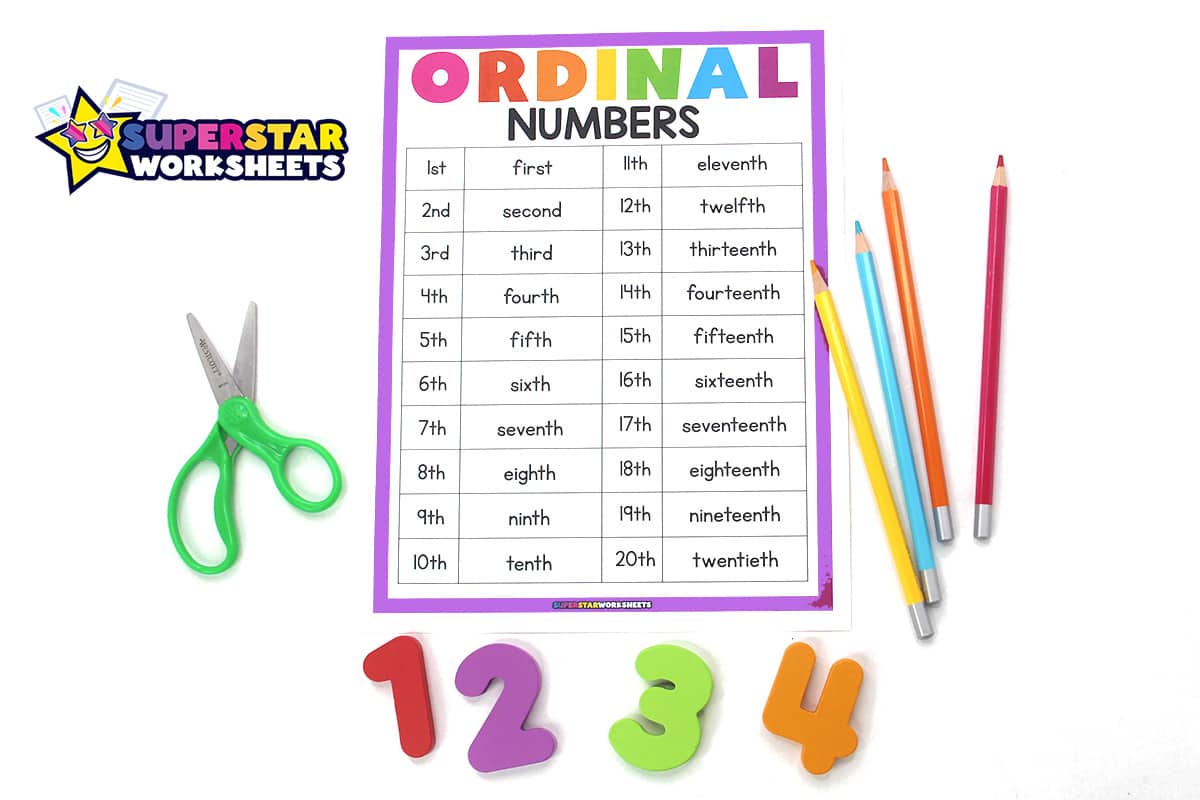
Ordinal Number Charts
Utilizing ordinal number resources in a classroom or homeschool setting is a valuable way to reinforce and practice this important mathematical concept. Start by introducing visual aids such as number charts or posters that display the sequential order of numbers. These visuals can serve as quick references for students to grasp the concept of ordinal numbers.
Engage students in hands-on activities where they can physically arrange objects or themselves in order. For example, you can have them line up in order of their birthdates or use blocks to build towers of different heights, labeling them with ordinal numbers. Incorporate worksheets or online exercises that require students to identify and write ordinal numbers in context. Consider incorporating games or interactive activities where students can compete or work collaboratively to reinforce their understanding of ordinal numbers.
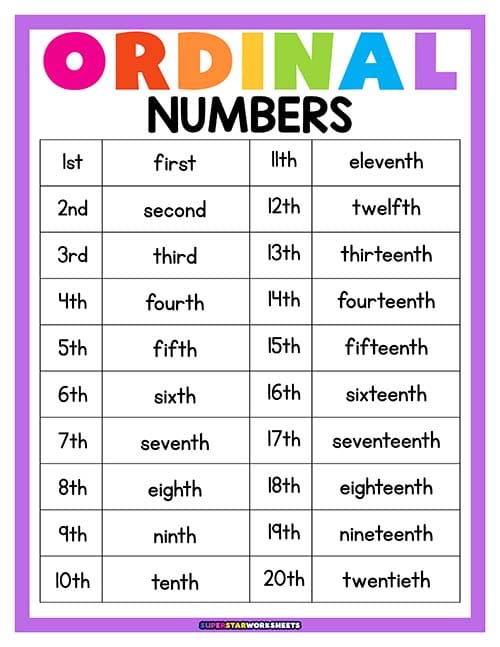
Ordinal Numbers 1-20
This free, printable ordinal numbers chart gives the correct numerical and word identification for the numbers 1-20.
- Ordinal Numbers
- Chart
- Math Concepts
- Visuals
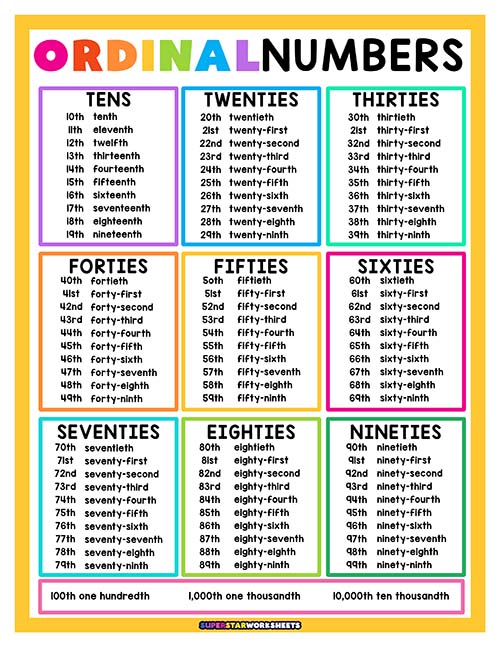
Ordinal Numbers in Tens
Ordinal number tens chart makes it easy to identify and recognize the numbers 1-100 in their ordinal number form.
- Math Concepts
- Ordinal Numbers
- Tens
- Visual Charts
Ordinal Numbers Flashcards
Ordinal number flashcards makes it easy to identify and recognize the numbers 1-30 in their ordinal number form.
- Numbers
- Counting
- Sequencing
- Reading
- Patterns
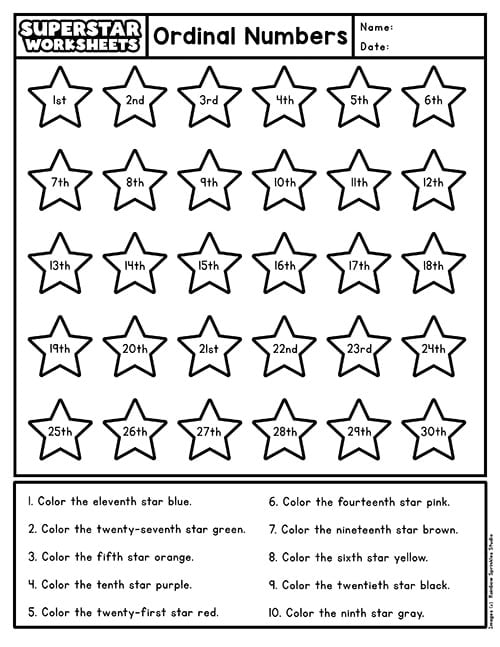
Ordinal Number Worksheets
This is a FREE pack of number ordinal number worksheets! Students will get to learn about the order of numbers with these activities.
- Counting Skills
- Memorizing Facts
- Spelling
- Reading
- Numbers
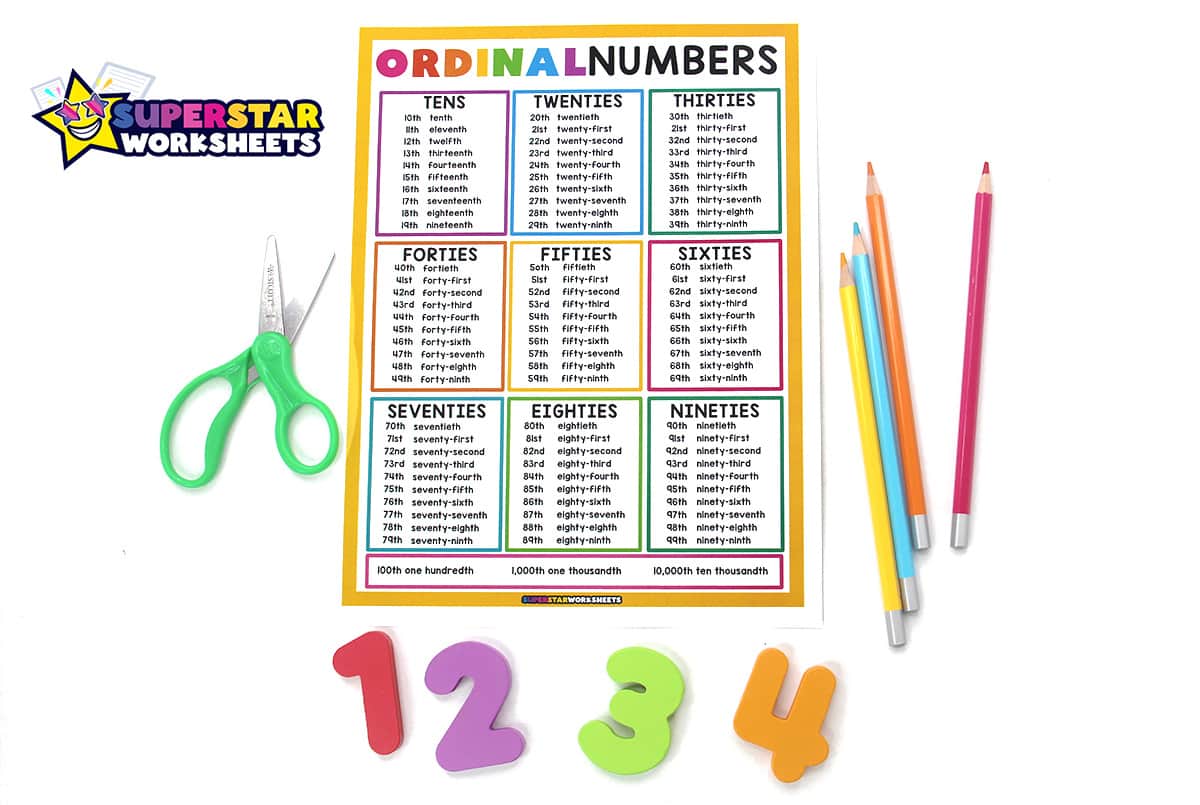
How to Use Ordinal Numbers?
Incorporate hands-on activities such as organizing a classroom scavenger hunt where students have to find objects and label them with their correct ordinal positions. Another idea is to create a classroom race where students participate and earn ribbons or medals based on their ordinal placements.
If you’re looking for a fun and interactive way to continue to teach math. Check out our Interactive Math Curriculum. Specifically designed for kindergarten students!
Kindergarten Interactive Math Curriculum
Don’t miss this low-prep, interactive, and hands-on, comprehensive math curriculum for Kindergarten! Interactive Math: Kindergarten provides a full year of hands-on and fun math activities and covers 4 days a week over 36 weeks. If you are looking for a program that excites your student(s), this program is designed to engage children while keeping the format easy and low-prep.

Looking for More?
Want more hands on, interactive activities for your primary students? Check out the following resources:

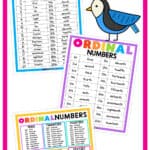
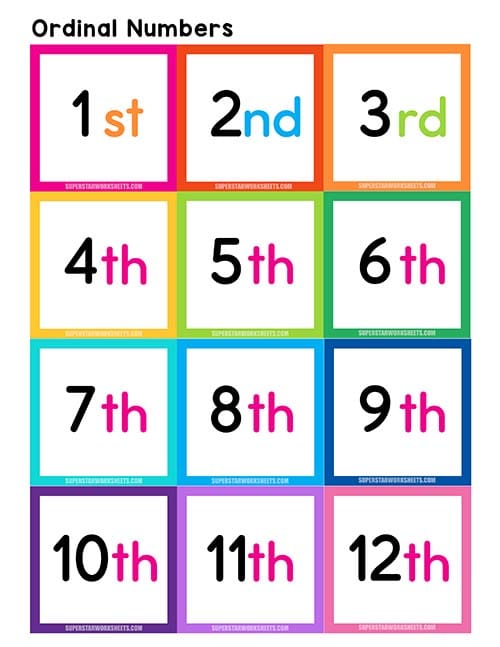
Leave a Reply